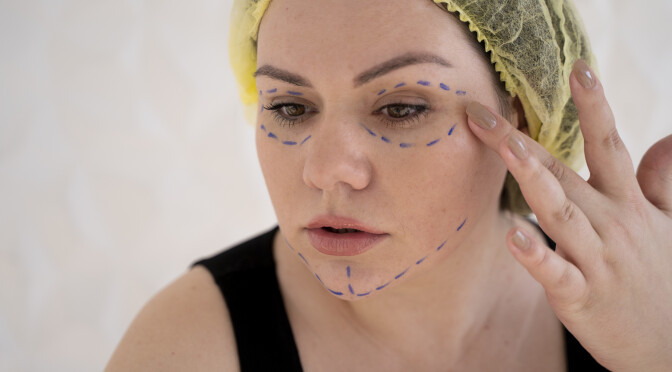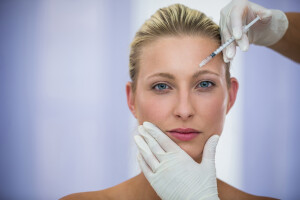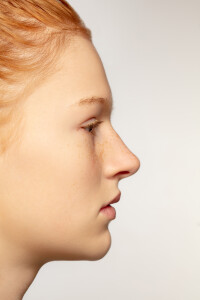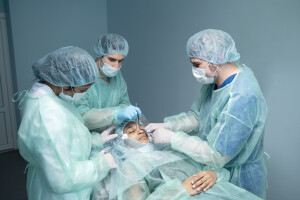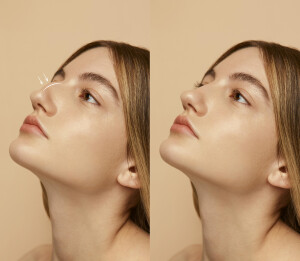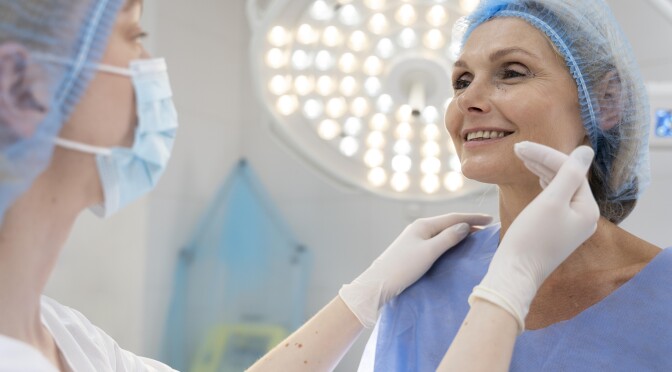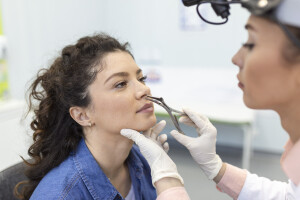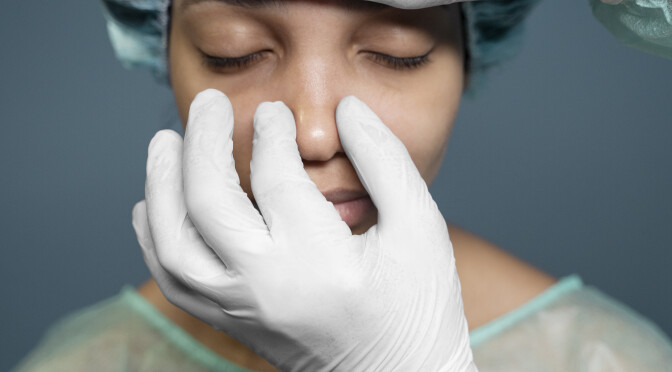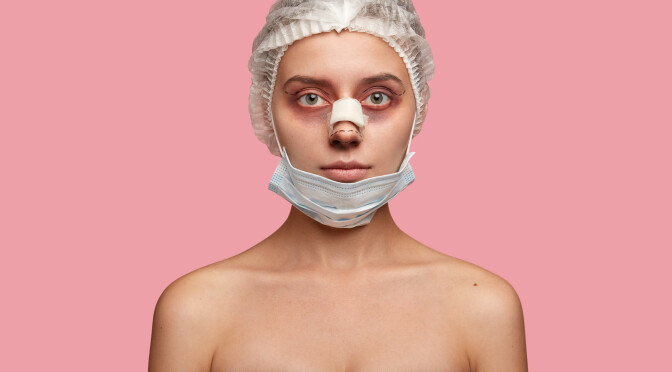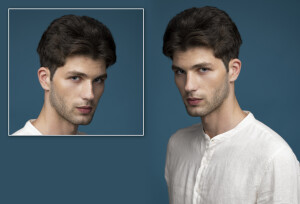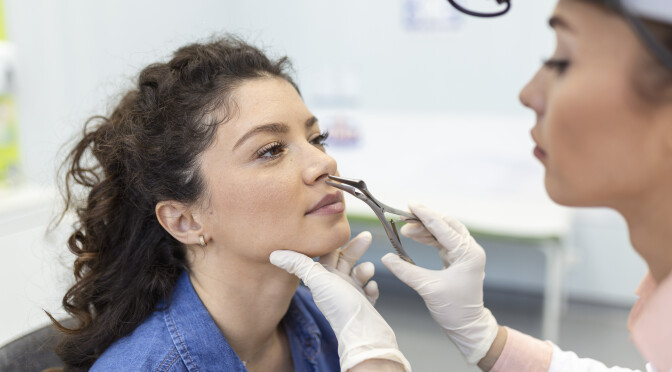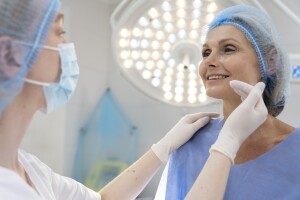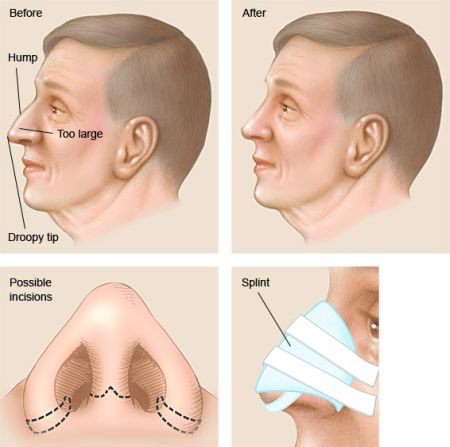In the ever-evolving world of cosmetic enhancements, individuals seeking to transform their appearance are presented with a wide array of options. From facelifts to breast augmentations, liposuction to rhinoplasty, the choices can be overwhelming. Deciding on the right plastic surgery procedure is a significant step in one’s journey toward enhancing their physical features. In this comprehensive guide, we aim to assist you in making an informed decision by exploring various types of plastic surgery procedures and understanding which one might be the most suitable for your unique needs.
Facial Rejuvenation
Types of Plastic Surgery: Facelift surgery is a popular choice for individuals looking to combat the signs of aging, such as sagging skin, wrinkles, and loss of facial volume. This procedure involves the removal of excess skin and the tightening of underlying tissues, resulting in a more youthful and rejuvenated appearance. Facelifts can target specific areas like the lower face and neck or provide a full facial transformation.
Botox (Botulinum Toxin)
How Botox Works
Botox, short for botulinum toxin, is a widely used non-surgical cosmetic procedure that targets dynamic wrinkles, which are wrinkles that appear due to repeated muscle movements. It works by temporarily paralyzing or relaxing the facial muscles responsible for creating these wrinkles. Here’s how the process works:
- Consultation: The Botox procedure typically begins with a consultation with a trained medical professional, often a dermatologist or a certified injector. During this consultation, the patient discusses their goals and areas of concern.
- Treatment: Once the treatment plan is established, tiny amounts of Botox are injected into specific facial muscles using a fine needle. Common target areas include the forehead, between the eyebrows (glabellar lines), and the outer corners of the eyes (crow’s feet).
- Muscle Relaxation: Botox blocks the nerve signals that trigger muscle contractions, leading to a temporary relaxation of the treated muscles. This prevents them from contracting and forming wrinkles on the skin’s surface.
What Botox Treats
Botox is highly effective at addressing various cosmetic concerns, including:
- Frown Lines: These are the vertical lines that form between the eyebrows.
- Forehead Wrinkles: Botox can smooth horizontal lines that appear across the forehead.
- Crow’s Feet: The fine lines that develop around the eyes, often associated with smiling or squinting.
- Bunny Lines: Wrinkles that form on the nose when scrunching it.
- Gummy Smile: Botox can reduce the appearance of excessive gum exposure when smiling.
- Chin Dimpling: It can also be used to reduce dimpling in the chin area.
Results and Duration
Botox injections typically provide noticeable results within a few days to a week after the procedure. These results can last for approximately 3 to 6 months, after which the effects gradually wear off, and muscle activity returns to normal. Many individuals opt for follow-up treatments to maintain their desired appearance.
Dermal Fillers: A Types of Plastic Surgery.
How Dermal Fillers Work
Dermal fillers are injectable substances used to restore volume, soften lines, and rejuvenate the face. Unlike Botox, which targets muscle activity, fillers work by adding volume to areas with wrinkles, fine lines, or hollows. Here’s how dermal fillers function:
- Consultation: Similar to Botox, the process begins with a consultation to discuss the patient’s goals and concerns. The choice of filler type and amount is determined during this stage.
- Injection: A trained professional injects the chosen dermal filler into the specific areas of concern using a fine needle or cannula. Fillers can be used in various facial regions, including the cheeks, lips, nasolabial folds (smile lines), marionette lines, and under the eyes (tear troughs).
- Volume Restoration: Dermal fillers consist of various substances, such as hyaluronic acid (a naturally occurring sugar molecule) or calcium hydroxylapatite. These substances add volume and structure to the treated areas, resulting in smoother, fuller skin.
What Dermal Fillers Treat
For those with sagging breasts due to factors like aging, pregnancy, or weight loss, types of plastic surgery may be recommended as an effective solution. One of the most common procedures chosen by individuals seeking breast rejuvenation is a breast lift (Mastopexy). This surgical intervention is specifically designed to address the issue of breast sagging and can provide remarkable results in restoring a more youthful and lifted appearance to the breasts.
- Nasolabial Folds: The lines that run from the sides of the nose to the corners of the mouth.
- Marionette Lines: Lines that extend downward from the corners of the mouth.
- Lip Augmentation: Fillers can enhance lip volume and shape.
- Cheek Augmentation: Adding volume to the cheeks can create a more youthful contour.
- Under-Eye Hollows: Fillers can reduce the appearance of sunken areas beneath the eyes.
- Scarring: Some fillers can be used to improve the appearance of certain types of scars.
Results and Duration
.Dermal filler results are typically immediate, with patients noticing a visible improvement in volume and smoothness. The duration of results varies depending on the type of filler used and the individual’s metabolism, but it usually ranges from 6 months to 2 years. Maintenance treatments can be scheduled to prolong the effects. Types of Plastic Surgery, including dermal fillers, offer individuals the opportunity to enjoy a rejuvenated appearance without the need for surgery or extended recovery periods.
Body Contouring
Liposuction
Liposuction, which falls under the category of Types of Plastic Surgery, is a widely sought-after procedure for individuals aiming to eliminate stubborn pockets of fat. It involves the removal of excess fat through a suctioning process, resulting in improved body contours. Liposuction can target various areas, including the abdomen, thighs, hips, and more, offering tailored solutions to specific concerns. This procedure is particularly popular among those seeking to enhance their body’s overall shape and achieve a more sculpted appearance.
Tummy Tuck (Abdominoplasty)
For those looking to address loose skin and weakened abdominal muscles, a tummy tuck may be the ideal choice. This surgery involves the removal of excess skin and fat while tightening abdominal muscles, leading to a firmer and flatter midsection. It is particularly popular among individuals who have undergone significant weight loss or childbirth.
Breast Enhancement
Breast Augmentation
Breast augmentation, a popular type of plastic surgery, is designed to increase the size and improve the shape of the breasts. This procedure can be customized with options for implant type, size, and placement. It offers a transformative change for individuals seeking fuller and more symmetrical breasts.
Breast Lift (Mastopexy)
For those with sagging breasts due to factors like aging, pregnancy, or weight loss, a breast lift may be recommended as one of the effective types of plastic surgery. This surgery raises and reshapes the breasts, resulting in a more youthful and lifted appearance. It can be combined with breast augmentation for comprehensive breast enhancement.
Nose Reshaping
Rhinoplasty
Rhinoplasty, commonly referred to as a type of plastic surgery known as a nose job, is a procedure that can alter the size, shape, and proportions of the nose. It can address cosmetic concerns or correct functional issues such as breathing difficulties. Rhinoplasty offers individuals the opportunity to achieve racial harmony and improved confidence.
Making the Right Choice
Choosing the right type of plastic surgery procedure should be a well-considered decision that aligns with your goals and expectations. To ensure you make an informed choice:
- Consult with a Board-Certified Surgeon: Schedule consultations with experienced plastic surgeons who can assess your needs and provide professional guidance.
- Define Your Goals: Clearly articulate what you hope to achieve through plastic surgery, whether it’s a more youthful appearance, improved body contours, or enhanced features.
- Consider Your Lifestyle: Think about how the procedure may impact your daily life, including recovery time and post-operative care requirements.
- Review Before and After Photos: Ask to see before and after photos of patients who have undergone the same procedure to visualize potential outcomes.
- Discuss Risks and Benefits: Have an open dialogue with your surgeon about the risks, benefits, and potential complications associated with the chosen procedure.
In conclusion,
The world of plastic surgery offers a myriad of options for those seeking physical transformation. By understanding the various types of plastic surgery procedures and carefully considering your goals, you can embark on a journey toward enhanced confidence and self-esteem. Remember, the decision to undergo plastic surgery is a personal one, and with the right guidance, you can make choices that align with your desires and expectations.

